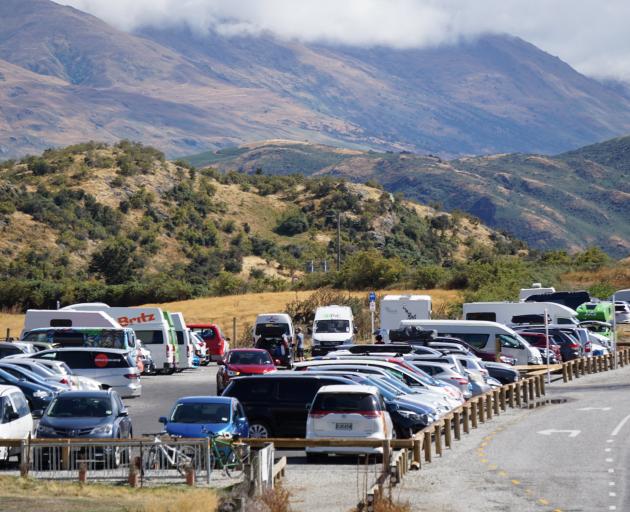
She made the comment in relation to the issue of car parking at the start of the Roys Peak track, near Wanaka. One view from the 16km day walk has a reputation as the most Instagrammed spot in the country.
We do not understand the appeal of a photo which emulates the shots taken by many other people, particularly when, far from being alone as you stand triumphant over the stunning vista, you have hordes of other wannabe Instagrammers queueing behind you. Perhaps it is the cliche which makes it so fashionable. Whatever it is, the thousand words painted by such pictures have a fake news tinge to them.
The popularity of the track is such the expanded 100-vehicle capacity car park has been full before 9am. Visitors hoping to beat the crowd by setting forth at 3am found they were sharing their intimate sunrise experience with 40 others. When the car park is full, vehicles are parked illegally along Mt Aspiring Rd.
Charging for car parking and introducing cheaper shuttle transport is being considered by the Department of Conservation in other parts of the country and Ms Sage said it could be introduced at Wanaka.
Accounts of unwelcome effects from tourism at some of our favourite places are likely to increase as the volume of tourists rises with the summer temperatures.
Recently, locals have raised concerns about an increase in tourists defacing the Moeraki Boulders and leaving their rubbish behind. It would seem impractical to have round-the-clock patrols for such places.
These instances will be among many around the country which illustrate the lack of tourism planning. When tourism numbers increased dramatically, there was little thought given to the need for such basic things as more toilets and pressure on parking.
We might want to see ourselves as a welcoming country which clasps visitors to its bosom and gives them a good time, but as we become more aware of the downsides to tourism, that veneer might be eroding.
The new Tiaki summer campaign launched recently by Tourism Minister Kelvin Davis and Ms Sage is putting a brave face on the situation. This time round, the campaign uses young people to encourage responsible behaviour in tourists, both domestic and international, asking them to care for land, sea and nature.
As yet, we do not have comprehensive information about the environmental impact of tourism, an approach which seems irresponsible when our natural environment is the major part of our attraction to tourists and one which we market mercilessly.
Accordingly, we look forward to the results of the investigation on this Parliamentary Commissioner for the Environment Simon Upton is undertaking this financial year.
He says that although tourism is a major contributor to our economy, its environmental impact has received a fraction of the attention devoted to land-based industries.
As the sector grows, it will become increasingly important to understand the demands it makes on our natural resources, and to examine the ways any impacts can be reduced or internalised, Mr Upton says.
In the meantime, maybe the best we can do is to encourage visitors to obey whatever rules apply and dob them in if they take no notice.
Comments
I've been employed by the tourism industry for many years but lately I have become concerned about it's effects. The Kiwi way of life that we as a nation have enjoyed as our birthright is suffering an onslaught of pressure by the huge increases in visitor numbers. Our celebrated natural landscape and wildlife are in fact facing 'death by tourism'.












